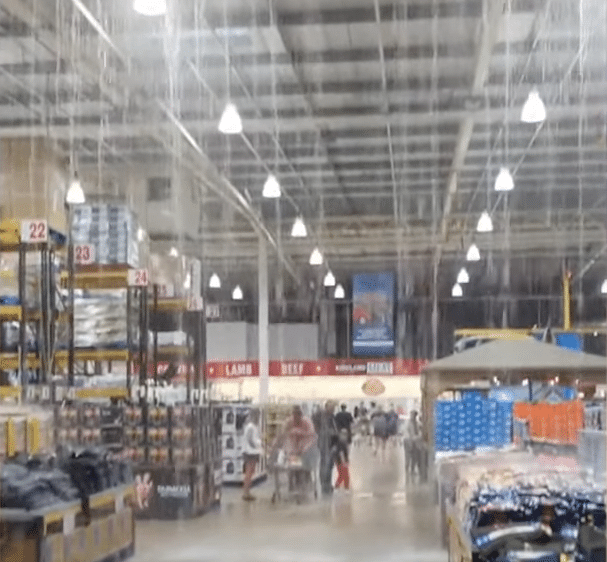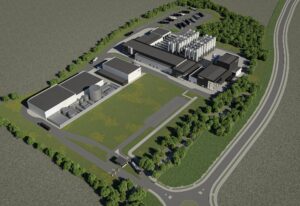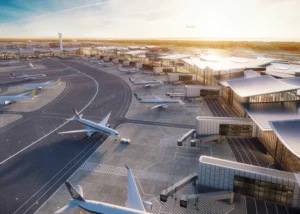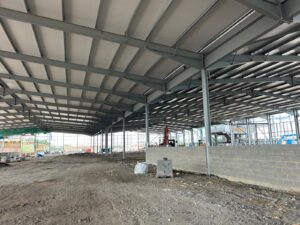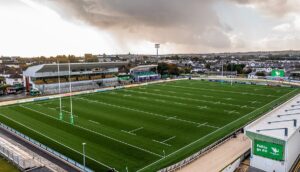When Rainwater Drainage Systems Fail
You might have seen the incredible footage of the catastrophic rainwater roof drainage failure in a Costco in Manchester a couple of days ago. Firstly, we didn’t design or install this system (our systems don’t fail!). However, by analysing the footage, views of the roof and the storm data, we can surmise several issues that have likely caused or contributed to this epic failure – and, importantly, how to avoid this happening in the future.
From what we can see from the footage shown in the YouTube clip below:
- It's a siphonic system – primary only with no secondary backup
- The siphonic pipework itself is not leaking
- It appears the rainwater is flowing down from the roof and gutter
Watch the Footage of the Rainwater Drainage Fail
Potential Issue #1Older Building with Undersized Drainage System
The Costco in question is located in Trafford Park and was built in the mid-1990s before the current British Standards codes and practices relating to rainwater drainage were introduced – BS EN 12056-3:2000 and BS 8490:2007 in 2000 and 2007 respectively. We don’t know if any refurbishments on the building have taken place since then; however, in our experience, buildings designed prior to the British Standard can often have severely undersized drainage systems – either not enough outlets (not an issue in this case) to drain the roof or undersized pipework.
Before the introduction of BS EN 12056-3:2000, the siphonic drainage would often be designed for flow rates as low as 75mm/hour. If this project was designed today it would be designed for a minimum of 176mm per hour!
This is not a siphonic-specific issue – gravity systems designed pre-2000 are also typically undersized for modern weather events.
Solution
Potential Issue #2Roof and Gutter Design
In our professional opinion, the dramatic rainwater deluge shown in the video was most likely caused by a build-up of water along the valley gutter of the Costco building. Essentially, the large volume of water, deposited by the heavy shower, is not being drained quickly enough through the (potentially undersized) drainage system. The weight of this built-up water could be causing a rupture between the gutter and roof, and as the footage shows, the water is streaming through along the length of the building.
Solution
A thorough inspection of the roof and gutter must occur immediately to determine if the gutter has adequate capacity to cater for peak rainfall events. Likely, it doesn’t have the capacity, but it’s not an insurmountable issue either! Capacity can be fairly easily improved – through repairs of the gutter or roof and an upgrade to the existing gutter to allow it to retain higher volumes of water without leaking. In addition, we would always strongly recommend a secondary system for a valley gutter.
Potential Issue #3No Back Up System
Looking at the footage, we can see only one “primary” siphonic system. There appears to be no secondary system. A roof of this size with a valley gutter should always have a secondary system for backup. A secondary system is essential on a valley gutter as no alternative overflow mechanism exists, unlike eaves gutters where a weirs type overflow mechanism can be used through the parapet.
Solution
If a secondary system was introduced this would become active once the water level builds up above the water depth of the primary system, providing additional protection to the building while also ensuring the gutter doesn’t become overwhelmed.
Potential Issue #4Heavy Rainfall Event
The rainfall on the 12th June that caused the flooding in Manchester based Costco was described as “heavy” and “challenging” by the Met Office in the UK. The frequency of more severe rainfall events is increasing in the UK – rainfall exceeding 20mm/hr likely to be 4 times more frequent by 2080 compared to the 1980s.
Solution
Potential Issue #5Poor Maintenance
In our experience, poor maintenance regime results in poor performance or failure of drainage systems. If an outlet becomes blocked the water will not drain fast enough causing a water build-up.
Removal of Anti-Vortex Plates
Note: if a siphonic outlet’s anti-vortex plate is damaged or removed (we see this regularly), then the siphonic system will not “prime” and revert to a gravity system. This is ok for small volumes of water as the water will trickle away slowly. Without the anti-vortex plate air enters the system which drastically reduces the available capacity of the pipework. As the rainfall intensifies this is exacerbated as the siphonic drainage system is forced to operate as an undersized gravity system. Further risk is now posed to the building because the drainage now only has 33% of the design capacity forcing the water to build up in the gutter. Siphonic pipework is installed at zero gradient and is not intended for use as gravity drainage which utilises falls.
Blockage
Any rainwater drainage system – gravity or siphonic will be compromised if the drainage outlets become blocked. A secondary system will help mitigate some of these issues, but regular roof maintenance and outlet inspection is ESSENTIAL.
Solution
Inspect your building’s roof drainage outlets regularly! Anti-vortex plates on siphonic systems, crucial for inducing the siphonic action, must never be removed. Inspect leaf guards and clear them if necessary. Finally, never, ever clean your roof by removing the outlet and pushing debris, dirt and leaves through the drainage system!
Set up a maintenance regime or let our maintenance crews do it for you. Our rainwater drainage maintenance crews will visit, inspect and clean outlets between one and four times a year. The regime frequency depends on site conditions. For instance, areas with more trees or heavy industrial areas will require more inspections. Green roofs also require more stringent maintenance as debris is more likely to block leaf guards for both gravity or siphonic systems.
In Conclusion
This is not a siphonic system failure – a gravity system in these conditions would have resulted in the same if not worse results. It appears that a combination of roof, gutter and rainwater drainage design failures caused the catastrophic effects we see in the video. It highlights the importance of the expertly designed rainwater system – one that is compliant with the current codes and standards and is properly maintained.
Luckily there are steps that can be taken to prevent this reoccurring. We have contact Costco in Manchester to offer our services to help them investigate and prevent this from happening again.
